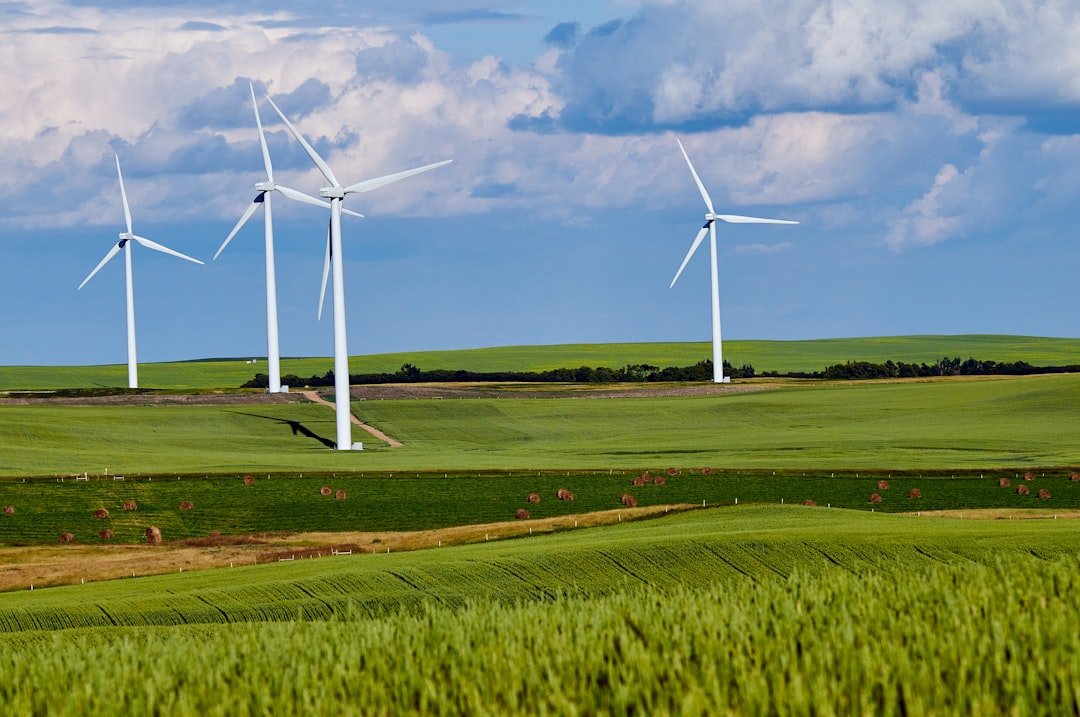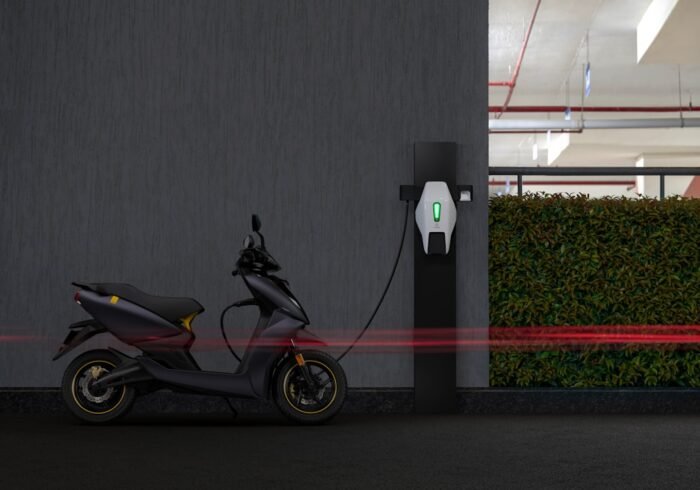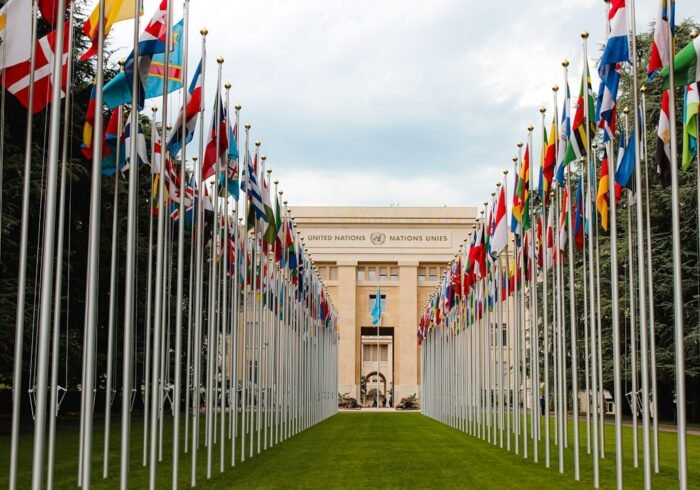Using the Kinetic Energy of Moving Air Wind energy is a renewable energy source that allows us to harness the power of nature. Wind turbines use this energy to capture wind motion, transform it into mechanical power, and then produce electricity. Since wind energy uses an abundant & limitless resource and emits no direct emissions while operating, it is regarded as one of the cleanest energy sources available.
Key Takeaways
- Wind energy is the conversion of wind into useful energy, typically through the use of wind turbines.
- The history of wind energy dates back thousands of years, with early uses for grinding grain and pumping water.
- The components of a wind turbine include the rotor, generator, gearbox, and tower, all working together to capture and convert wind energy.
- The process of generating electricity from wind involves the rotor blades capturing the kinetic energy of the wind and converting it into mechanical energy, which is then transformed into electrical energy by the generator.
- Wind energy has a positive environmental impact, as it produces no greenhouse gas emissions and has a minimal impact on land and water resources.
Wind energy has enormous potential and is thought to be able to provide a sizable amount of the world’s electricity needs. The transformation of wind energy from kinetic to electrical form is the basic idea underlying wind power. Air moves from high-pressure areas to low-pressure areas as a result of pressure differences created by wind.
Strategically positioned wind turbines are found in areas with favorable wind patterns, such as hilltops, open plains, and coastal regions. When wind drives the turbine’s blades, a generator transforms the mechanical energy into electrical energy that can be distributed throughout the power grid. Wind energy has been utilized for thousands of years; early societies used basic windmills for a variety of purposes. Vertical-axis windmills were used to grind grain and pump water in ancient Persia between 500 and 900 AD, which is when wind power was first documented.
These early developments set the stage for later developments in wind energy harvesting. Windmills spread throughout Europe and eventually the Americas as their form and function changed over the ages. With the creation of increasingly effective wind turbines in the late 19th century, wind energy entered its current era. James Blyth, a Scottish inventor, constructed the first wind turbine known to produce electricity in 1887, and it powered his house. However, interest in wind energy did not pick up steam again until the oil crises of the 1970s. In an effort to lessen reliance on fossil fuels, governments and researchers started funding wind technology.
| Wind Energy Metric | Data |
|---|---|
| Global Wind Energy Capacity | 743 GW (2020) |
| Number of Wind Turbines Worldwide | Over 340,000 |
| Percentage of Global Electricity from Wind | 4% |
| Top Wind Energy Producing Country | China |
| CO2 Emissions Avoided by Wind Energy | Over 1.1 billion tons (2020) |
Large-scale wind farms that are now typical were made possible by the notable improvements in turbine efficiency & design brought about by this renewed focus. Several essential parts come together in a typical wind turbine to transform wind energy into electrical power. With its blades that harness the kinetic energy of the wind, the rotor is the most noticeable component.
The aerodynamic design of these blades maximizes efficiency, & they are typically composed of lightweight materials like carbon fiber or fiberglass. When the blades rotate, a hub that is attached to the rotor & mounted on a shaft rotates as well. The nacelle, which contains the generator & other necessary equipment, is another crucial part.
The nacelle can capture stronger winds at higher altitudes because it is perched atop a tall tower. A gearbox inside the nacelle might be there to speed up the generator’s rotation and improve its ability to generate electricity. In order to maximize performance & prevent damage during severe weather, turbines are also outfitted with control systems that track wind conditions and modify the pitch or yaw of the blades. The air moving across the turbine blades is the first step in producing electricity from wind.
During windy conditions, the blades revolve around a central hub. A shaft that is attached to a generator inside the nacelle receives this rotational motion. The generator then uses electromagnetic induction to transform this mechanical energy into electrical energy. For effective transmission over power lines, the electricity must be converted from its normally low voltage once it has been generated. Within or close to the turbine is a transformer that accomplishes this.
After that, the electricity is fed into the grid so that residences & businesses can receive it. Numerous turbines operating in unison make up wind farms, which together produce significant amounts of electricity that support local power supplies. Since wind energy has less of an impact on the environment than fossil fuels, it is frequently praised. Being a key component in the fight against climate change, it emits no greenhouse gases while in use. Also, wind farms use a lot less water than conventional power plants, which is crucial in arid areas where water scarcity is an issue.
Although wind energy is more environmentally friendly than many other options, there are still some drawbacks. Local ecosystems & wildlife habitats may be impacted by the development & maintenance of wind farms. Concerns regarding the loss of biodiversity arise from the fact that birds and bats are especially susceptible to collisions with turbine blades. In addition, improper handling of the production and disposal of turbine parts may have an adverse effect on the environment. Therefore, current research endeavors to alleviate these effects by means of improved siting techniques & technological advancements.
Energy independence & sustainability. Its sustainability—wind energy can be captured for as long as the sun shines & the winds blow—is one of its main advantages. Also, by lowering dependency on imported fossil fuels, wind power improves national security and advances energy independence. Wind energy’s challenges.
Unfortunately, there are disadvantages to wind energy as well. Its intermittency is a major problem; wind does not blow continuously, which causes variations in the amount of electricity produced. Grid management may become more difficult as a result of this variability, requiring energy storage or backup power sources. Resolving Issues and Equilibrium Benefits.
In addition, some localities are against the construction of wind farms because they fear noise pollution and adverse landscape effects. It is imperative that policymakers weigh these benefits & drawbacks when attempting to increase the use of renewable energy sources. With ongoing technological developments that increase efficiency and lower costs, wind energy seems to have a bright future. Higher energy output while reducing land use is made possible by innovations like larger turbine designs and better materials. Using the more reliable and powerful winds that blow over oceans, offshore wind farms are also becoming more popular.
Also, governments are pledging more & more to meet renewable energy targets, which include large investments in wind power, as awareness of climate change grows worldwide. Wind energy integration into national grids has already advanced significantly in nations like Denmark & Germany, setting an example for others to follow. The role of wind energy in forming a sustainable energy future is expected to grow as research advances & public support grows. In the larger framework of world energy production, wind energy holds a crucial position. Wind energy and other renewable energy sources are becoming essential parts of national energy plans as countries work to reduce carbon emissions & move away from fossil fuels.
Other renewable energy sources, like solar power, are enhanced by wind energy’s varied mix, which also improves grid stability. More integration of renewable sources into the current infrastructure is also being made possible by technological advancements. Smart grid technologies make it possible to better manage variable power sources, such as solar & wind, guaranteeing a steady supply of electricity even when generation is low. Efforts to build a cleaner, more sustainable future for future generations will surely continue to rely heavily on wind energy as nations strive toward ambitious climate goals. In summary, wind energy is not only a practical substitute for conventional fossil fuels but also a crucial component of an all-encompassing plan to combat climate change & advance sustainable development.
It has the potential to significantly alter the global energy landscape while protecting the environment for coming generations if more money and creativity are put into it.



